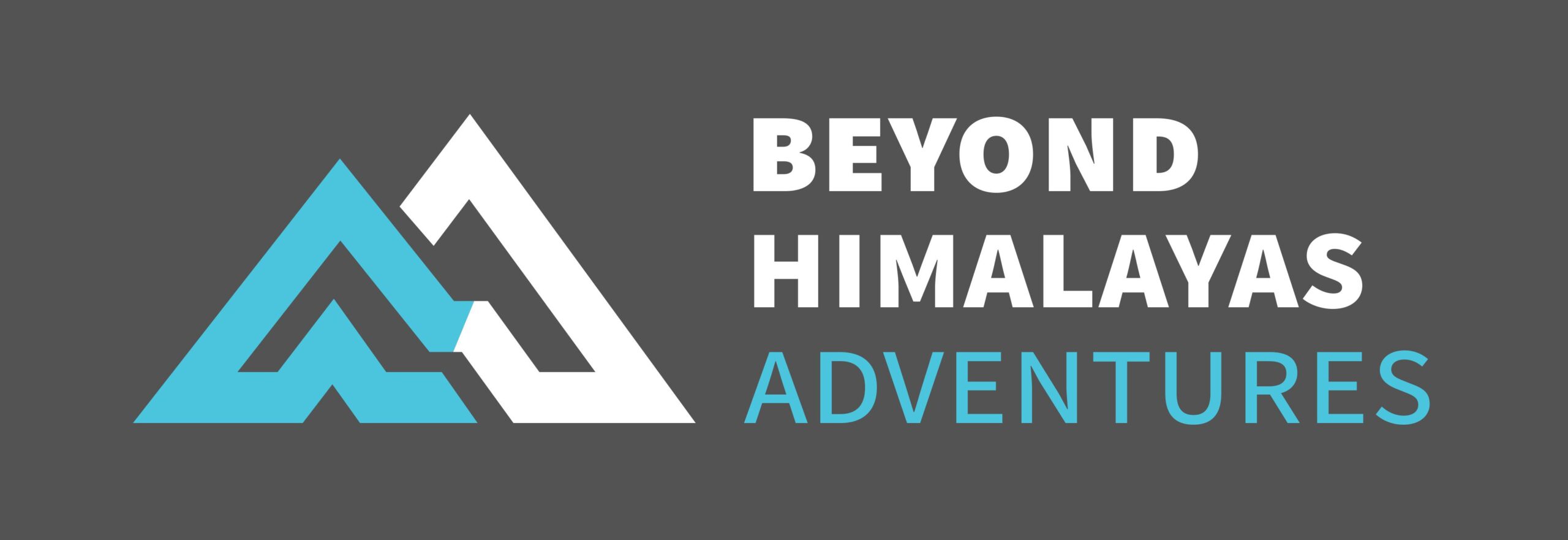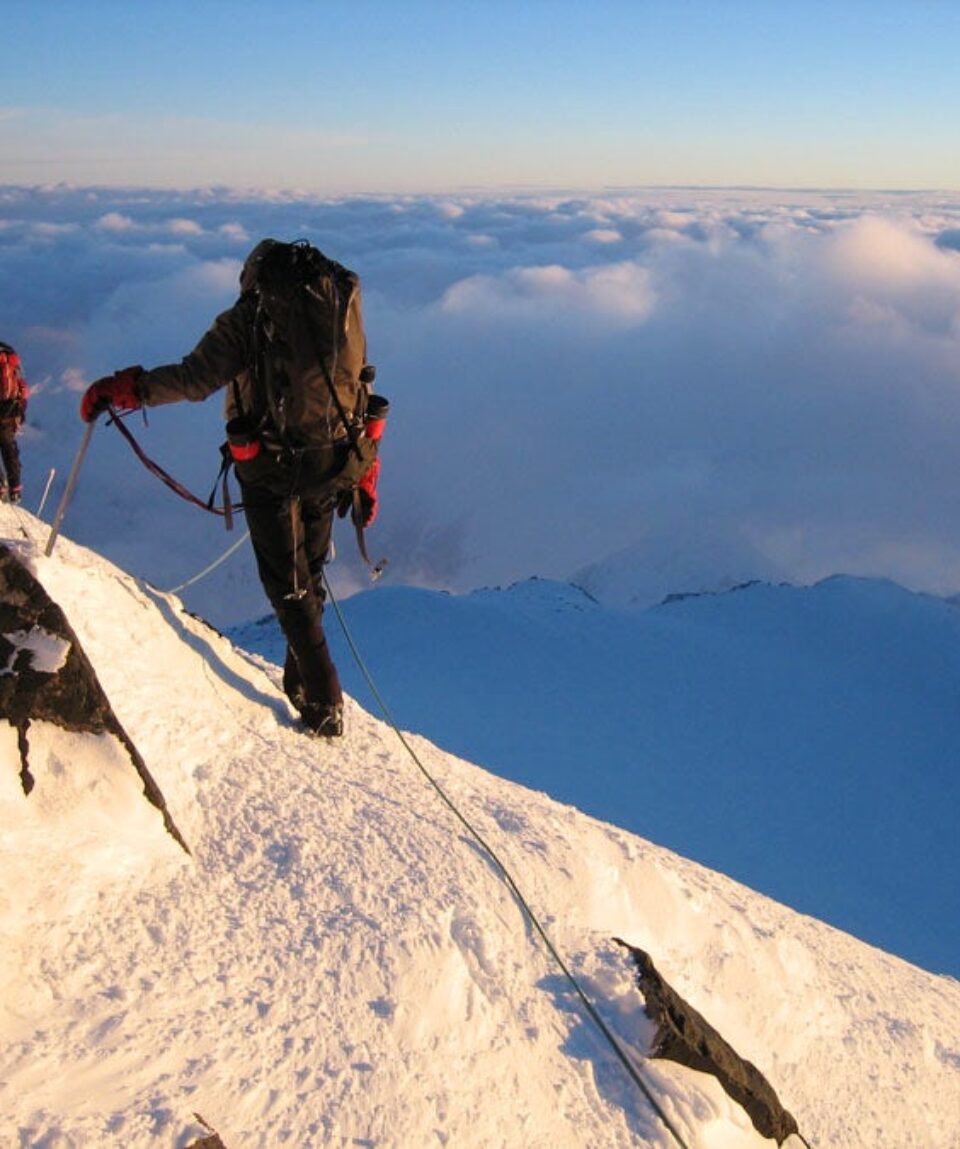Denali
fromClimb North America’s highest mountain and experience the most classic climb and touch the psyche as the alpinists and undertake your challenges on Denali.
-
Reviews 0 Reviews0/5
-
Vacation Style Holiday Type
-
Hiking
-
Mountain
-
-
Activity Level Challenging
-
Group Size Medium Group
Lying in the heart of the 600-mile-long (960-km-long) Alaska Range, Mount McKinley, or Denali, is the largest mountain in North America, rising 20,320 feet (6194 m) above sea level. Denali towers almost 18,000 feet (5500m) above the surrounding tundra, giving it more vertical rise than Mount Everest. In the native Athabaskan, Denali means “The Great One” and indeed, that it is!
Denali is North America’s highest mountain and one of its most impressive in terms of sheer mass, weather and climbing history. The classic West Buttress Route requires only intermediate technical climbing skills; but perseverance, intense physical exertion, teamwork and patient acclimatization are all necessary for this climb. Many climbers find this to be the most challenging thing they have done in the mountains.
An ascent of Denali is ideal for those wishing to experience high-altitude expedition mountaineering. Climbers must have intermediate technical snow and ice climbing experience, glacier travel and winter camping skills, plus be in great shape and able to carry 20kg/50lb+ packs. An ascent of Denali is a physically challenging, yet incredibly rewarding experience.
Expedition Highlights:
- Boldly tick ‘Wild Alaska’ off of your bucket list
- North America’s highest peak and one of the Seven Summits
- Veteran Denali guides
- Excellent high-altitude training in a spectacular environment
- Land on a glacier in a ski plane in the remote mountains to begin your expedition
- Climb on a mountain where the sun never really sets.
- Guide services
- Denali National Park entrance and climber fees
- Two scheduled nights in Anchorage at the Lakefront Hotel (double occupancy)
- Scheduled ground transportation from Anchorage to Talkeetna
- Flight from Talkeetna to/from base camp
- All meals while on the mountain
- All group equipment ((tents, kitchen, ropes, sleds, snow pickets, shovels, group med kit, satellite phone, GPS tracker, etc.)
- Airfare to/from Anchorage
- Accommodations post-trip in Anchorage
- Accommodations in Talkeetna
- Personal climbing/camping gear and clothing
- Meals while staying in Anchorage/Talkeetna
- Any type of personal expenses, such as alcoholic beverages and drinks, phone, and laundry.
- Rescue & travel insurance, trip cancellation costs, accident or health emergency, evacuation, loss, theft or damage to baggage, and personal effects.
- Guide/Staff Gratuities
- Day 1 Arrive Anchorage, 2pm gear check, orientation at the hotel, optional team dinner
- Day 2 Ground shuttle to Talkeetna, check in at ranger station, orientation and slide show, pack for glacier flight
- Day 3 Carry loads to cache below Camp 2 (3,000m/9,800ft), return to Camp 1
- Day 4 Move to Camp 2 (3,400m/11,200ft)
- Day 5 Retrieve cache, return to Camp 2
- Day 6 Carry loads to cache (4,150m/13,600ft), return to Camp 2
- Day 7 Move to Camp 3 (4,350m/14,200ft)
- Day 8 Back carry cache
- Day 9 Rest Day
- Day 10 Carry cache above the top of fixed lines (4,950m/16,200ft), return to Camp 3
- Day 11 Optional Rest Day
- Day 12 Move to Camp 4 (5,250m/17,200ft)
- Day 13 Optional Rest Day
- Day 14-19 Summit Window 14-18hr day (6,190m/20,308ft)
- Day 19-20 Descend from High Camp to the landing strip
- Day 21 Fly off the glacier (weather permitting), sort gear in Talkeetna, trip ends
Having the right equipment on your adventure trips will make almost as much difference to your success, safety, comfort, and enjoyment as any physical training you do. It is essential that you take the time to acquire the correct gear; don’t wait for the last minute to find out your local shop doesn’t have your size. This equipment is expensive, but you can often find great sales online and at your local gear store. The purpose of this gear list is to help guide your purchases.
This list is a guide. While you are required to bring everything on this list, there are numerous options, brands, and versions of each piece of equipment, unless otherwise noted. Using our current suggested brand list we encourage you to shop around, do research, use your experience and the listed features to find the best gear for you.
During your time in the mountains, you will encounter a very wide range of temperatures and weather conditions. At one end of this range is the pleasantly warm and beautiful low land, while at the other end of the spectrum is found the cold and often windy weather of the highest peaks in the world. The equipment you bring must function well in a wide variety of conditions. Your clothing should be warm, lightweight, dry quickly, and allow good freedom of movement. The layering principle, based on several thin layers of insulation (rather than one thick one), covered with an outer weatherproof shell, meets these needs well.
A Note on Packing
For your international flights, we recommend that you pack all your equipment in your two duffle bags. Do not simply pack your backpack (since the straps can be damaged by the baggage handling machines). It is important to lock these bags for their trip. Depending on the airport, you may be able to put your travel locks on after TSA has searched the bags. If not, Lock the bags with Zip Ties. If the TSA cuts off the zip-tie to search your bag, they will replace it. You will still need the travel locks to lock your bags in the hotel and during the expedition. Generally, you will take one duffel up to Base Camp/on a trek , and leave one in the hotel in city hotel with your belongings for your time in the city. Your trek in duffel will only be accessible in the evenings (with items such as changes of clothing, sleeping bag), and your day pack will hold vitals such as water, layering, blister kit, and camera.
Important Notes:
- Don’t cut corners on the quality of gears
- Understand the function of each gear properly
- Acquire your gears well in advance
- Eliminate unnecessary luxuries
- Seasonal fluctuation will impact the requirement of gear
Tips:
- You can always rent gears if you are not willing to invest
- Check the sizes especially of boots before leaving for the mountain
- Wear summit socks while trying the boots
Travel
- In town clothes (some restaurants are nice so a collared shirt/dress is not a bad idea)
- 2 large duffels, water proof PVC rugged construction (like North Face XXL) One should be light weight and will be used to haul in the sled. The second will stay at the hotel in Punta Arenas with your street clothes and other items not needed for the climb.
- Travel wallet
- Passport
- Cash
- Print out of team emails and bring with you
- Hand sanitizer (small container, for the mountain and travel)
- Marker
- Pen
- Day pack for carry on, 40L
Upper Body:
- 1 ski/winter hat
- 1 ball cap for sun protection
- 1 balaclava/face mask (must cover your whole face (all exposed skin) with goggles
- 2- 3 buffs
- 1 pair liner gloves
- 1 pair of lighter work gloves
- 1 pair heavy climbing gloves (like OR alti glove or Black Diamond Guide Glove)
- 1 pair heavy mitts (like OR altimitt)
- 1 pair dark goggles (like Smith turbofan)
- 1 goretex shell jacket
- 2 long john tops (1 light, 1 medium)
- Synthetic Sun hoodie or trekking shirt, long sleeve (like Patagonia sun hoody)
- 2 Upper body Pile Layer, like Patagonia R1 or similar hoodie (must be able to layer on top of each other
- Synthetic Puffball jacket, synthetic or down, mid weight with front zip and hood or similar (like Patagonia Puffball)
- Ultra heavy weight down parka with hood (like Mountain Hardware Absolute Zero or similar)
Lower Body
- Warm Down Booties
- 1 thin long john pants, and 1 pair of medium weight long john pants
- 1 pair medium weight climbing pants
- 1 pair of goretex shell pants, must be full zip
- 1 pair of down pants, must be full zip
- 3 pairs climbing socks (1 thin, 2 thick)
- 2 pairs climbing underwear
- Triple climbing boots (like La Sportiva Olympus Mons or Millet Everest)
Climbing Gear
- Power battery/recharger/solar charger with cords (optional)
- Pee funnel (women)
- Earplugs
- Camera or phone camera
- Small Aloe Vera for sun burn
- Hand Cream (optional)
- 1 sleeping bag, rated to -40C/F (like Marmot Cwm)
- 1 thermarest
- 1 ridge rest
- Lip balm
- Sunscreen (like All Good 35spf with high Zinc Oxide content)
- Book (optional)
- Alarm (on watch or other)
- Headphones (optional)
- Baby wipes, for staying clean
- Meds: (bandages, triple antibiotic ointment, tums, antacid, immodium, ciproflacin, azithromycin, ibuprofen, aspirin, blister kit, bandaids, etc) keep it fairly small and light to reduce weight
- Toilet paper (2 rolls)
- Pee bottle (1 liter)
- 5 large heavy duty trash bags (for caching gear)
- 2 X 1 liter Nalgene-type water bottles with full covers (Camelback-type hydration systems are unacceptable. They freeze, pop and break so are unreliable.)
- Large internal frame pack, must be 100+ liter (like Mountain Hardware BMG)
- Light harness (like Black Diamond)
- Helmet
- 1 pair steel crampons
- 5 locking carabiners
- 9 non-locking carabiners
- 40ft of cordelette (7mm)
- 1 Ascender
- 1 single length sling
- 1 double length sling
- 2 pairs glacier glasses (one spare)
- Belt for climbing pants
- Collapsable ski poles
- 1 long alpine length ice axe
- 3 stuff sacks
- 1 compression sack
- 3lbs personal snack food (real food and stuff that you know you will want to eat at altitude when you don’t feel like eating: nuts, jerky, granola bars, dried fruit, candy, etc.)
- Cup
- Bowl
- Spoon
- Toothpaste and toothbrush
Climbing Denali is difficult and requires adequate physical and technical training. Keep in mind that not only will you have to deal with altitude, but also with extreme weather and pulling sleds with food, gear and more. You will need rope skills, avalanche training, and how to use ice-ax and crampons.
Denali is famous for being a very cold peak, year-round. Therefore, it is no surprise that the best season to climb it is in the summer, between May and July. The average daytime temperature during this season is 19°C, and often below zero at night and high altitudes.

